Sorteringsvejledning på Engelsk
Food waste
Food waste recycles quickly and may become biogas, compost and liquid fertiliser for the farmers.
YES PLEASE
- Food in all shapes and sizes, e.g. leftovers and food with mould
- Coffee filters and tea bags
- Egg shells
- Small bones, e.g. from poultry and spareribs
- Cut-off flowers and herbs
- White napkins
NO THANK YOU
- Soil from potted plants (garden waste)
- Coloured napkins (residual waste)
- Animal bedding, cat litter, animal faeces (residual waste)
- Greaseproof paper and paper for muffins (residual waste)
Residual waste
Residual waste is for waste, which is not suitable for reuse or recycling.
YES PLEASE
- Dirty packaging of cardboard and paper
- Bags of crisps and coffee
- Gift-wrapping paper and coloured napkins
- Cigarette stubs
- Pizza boxes
NO THANK YOU
- Chemicals (toxic waste)
- Light bulbs (toxic waste)
- Big polystyrene boxes (recycling depot)
- Pressure cylinders (recycling depot)
Paper
Paper is one of the units for waste, which has been collected over the longest periods of time and has a high percentage of reutilisation.
Paper is being deposited for Danish and international recycling plants where it is turned into new paper.
YES PLEASE
- Newspapers, printed advertising circulars, magazines and brochures
- Office paper and receipts
- Envelopes with or without windows
- Bags in paper
NO THANK YOU
- Wet and dirty paper (residual waste)
- Wet-strong paper, e.g. oatmeal bags (residual waste)
- Gift-wrapping paper and greaseproof paper (residual waste)
- Books (recycling depot)
Cardboard
The quantity of cardboard has increased as we frequently shop online. Cardboard is being deposited for Danish and international sorting and recycling plants where it is being recycled.
YES PLEASE
- Cardboard boxes, cardboard cylinders and cardboard packaging
- Shoe boxes
- Cartons
- Egg trays (clean and dry)
NO THANK YOU
- Dirty food packaging (residual waste)
- Wet and greasy cardboard (residual waste)
- Cardboard mugs (residual waste)
- Cartons for foods and drinks (cartons for foods and drinks)
Metal
Metal has a high environmental impact as the extraction of metal in nature is highly resource demanding. The potential for further sorting is big as much metal ends up as residual waste. Metal must be pure and scraped free from leftovers.
YES PLEASE
- Tins and lids
- Tea-light containers
- Pots, pans and cutlery
- Nails and screws
- Beer and soda bottles without any deposit
NO THANK YOU
- Spray cans (toxic waste)
- Metal with chemicals (recycling depot or toxic waste)
- Needle (to be delivered at a pharmacy)
Plastic
Plastic packaging constitutes a large part of the household waste, just as the potential for recycling is enormous. Some units contain chemicals and must be handled differently.
Plastic must be pure and scraped clean.
YES PLEASE
- Plastic trays, tubs and lids
- Plastic bags (without metal layering)
- Plastic foils and layers
- Plastic toys without any electronics
NO THANK YOU
- Wellington boots, rain clothes and air beds (recycling depot)
- Drainpipes and gutters (recycling depot)
- Medicine plastic packaging (pharmacy)
- Bags with metal layers, e.g. bags of crisps, some bags of sweets and bag-in-a-box wine bags (residual waste)
Glass
The glass waste is for glass, which is pure and scraped free from all foods and drinks. The glass does not have to be newly washed. Today, most glass is crushed and melted into new glass products.
YES PLEASE
- Glass and glass bottles in all colours without deposit
- Tinned glass and drinking glass
- Vitamin glass
- Broken glass from all the above
NO THANK YOU
- Porcelain, mirrors and ceramics (recycling depot)
- Light bulbs (toxic waste or recycling depot)
- Medicine glass (pharmacy or recycling depot)
Toxic waste
Too much toxic waste ends up in the residual waste or in other waste units where it may cause damage. Therefore, it is essential that toxic waste is being sorted correctly.
In Køge Municipality, you hand in your toxic waste in the red box or at the recycling depot.
YES PLEASE
- Spray cans, leftovers of painting and oil
- Light sources, e.g. light bulbs, LED light bulbs, etc.
- Fertiliser and units of decalcification
- Packaging from nail varnish and nail varnish remover
NO THANK YOU
- Combustible cloths and liquids (recycling depot)
- Fireworks fired
- Sharp objects (recycling depot)
- Old knives (metal)
Textile Waste
- Damaged clothing and textiles
- Worn-out bedding and underwear
- Discolored and stained towels, dishcloths, and rags
- Lonely socks and gloves
Textile waste should be clean and dry. It must not be moldy, have paint/oil stains, or contain electronics.
Place the textile waste in a clear bag and tie a knot before disposing of it.
